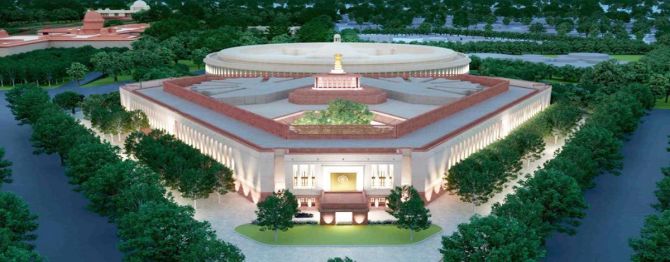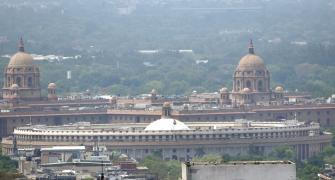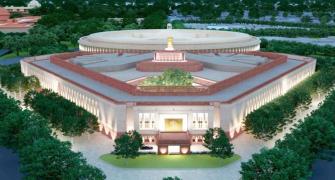The project shows a lack of respect for history, even if an inalienable part of it is colonial history, asserts T N Ninan.

The Central Vista project in the heart of the capital has been universally panned.
Before one gets into how the project is all wrong, there is something to be said for change.
First, the Modi government is not the first one to say that Parliament House is now unsafe.
Nor is it that the Central Vista is a great sight today.
The place is unfriendly to visitors, parked cars have encroached wholesale on green areas, and there is poor land use in a prime area.
The 'Bhavans' themselves are functional, but in various stages of disrepair.
People have played around with flooring material and office layout, the doors and windows show their age, and toilets often stink.
There is almost no central air-conditioning, which in this day and age should be essential.
The security arrangements are haphazard and repetitive.
The whole place needs a makeover, internal redesign, and better maintenance.
So, a project that promises better land use, better connectedness between buildings, space for underground parking and central air-conditioning has something to say for itself.
Does that justify the Central Vista project in its current form? Not at all.
For a start, the project shows a lack of respect for history, even if an inalienable part of it is colonial history.
Second, redoing buildings or putting up new ones is a good time to review work processes, as the two have to be in alignment.
If the intention is to switch to open office plans and fewer work silos (as Narendra Modi has wished), does the government want to switch to a desk-officer system with just two levels of decision-making, as the first Administrative Reforms Commission suggested half a century ago -- implying an end to the current file-movement system of working? No such review has been done.
Third, old signature buildings can be repurposed, and rebuilt inside out for the modern age with greater structural strength and without changing the external profile, as has been done with the White House, the Bundestag and many others much older than the Lutyens-Baker buildings.
If the Lok Sabha chamber is too small to accommodate more members (as may become necessary), the Central Hall can be made the Lower House.
Fourth, some of the 'temporary' barracks dating back to World War II can make way for parking towers, with a park-and-ride system initiated, to get rid of the current parking mess.
Fifth, there is no particular merit in wanting all government offices close together; it might even be a security risk.
Indeed, contrary to the logic of congregating offices, the new army headquarters will be far away, in the city's cantonment area, while the air headquarters remains where it is -- though the defence services are integrating both planning and operations.
Nor is uniformity of building design a virtue; consider the architectural variety of the Washington Mall.
And sixth, how will the millions of priceless artefacts and fragile collections of the National Museum and National Archives be logged and stored safely before being re-housed in the North and South Blocks that may be unsuitable as museums, especially if they are unsafe?
Finally, newer government buildings have tended to be inferior to older ones.
They are either eyesores (like Sena Bhavan, the current army headquarters, and Lok Nayak Bhavan not far away), or adopt a wasteful expansiveness: The defence research building behind South Block, the Comptroller and Auditor General's new head office a few kilometres away, and the new home of the external affairs ministry, built on the assumption that prime land is both costless and limitless.
Individual offices in some of these buildings (including those in the Lodhi Road Institutional Area, another unsightly congeries) are bigger than a badminton court.
How does one avoid a repetition of this history, or its descent into vandalism of a historic area?
In short, why should such an important project, massive in scale, conceived in secrecy, shared selectively with small groups but shut out of the public eye, without considering cheaper and better alternatives, be executed in the midst of a pandemic when every rupee that can be spared should go into improving the country's medical capabilities?











